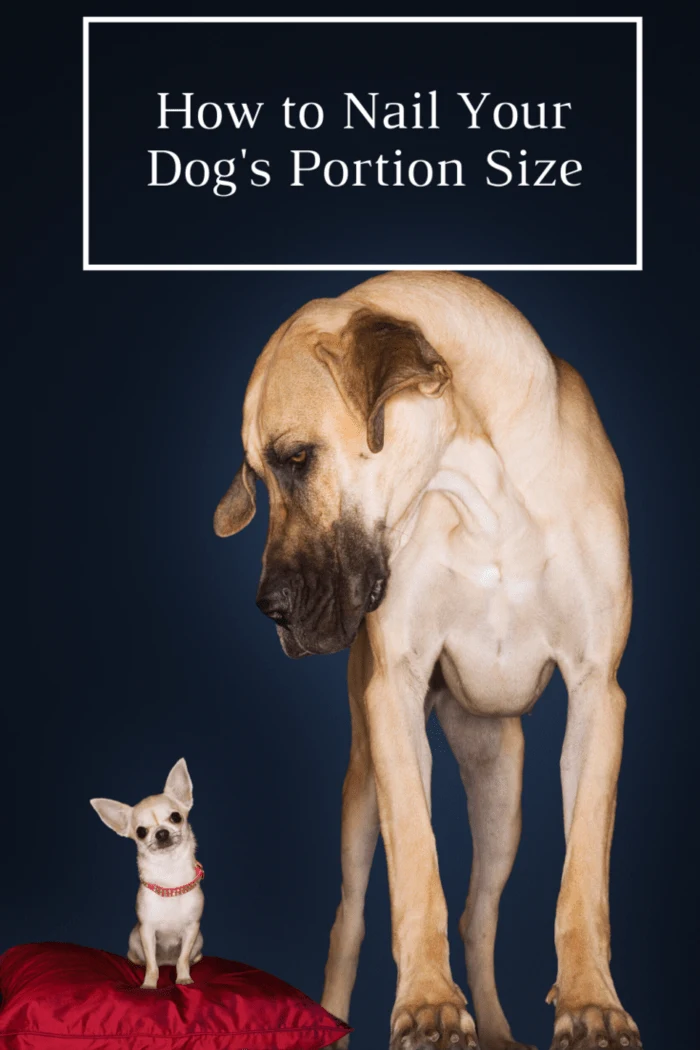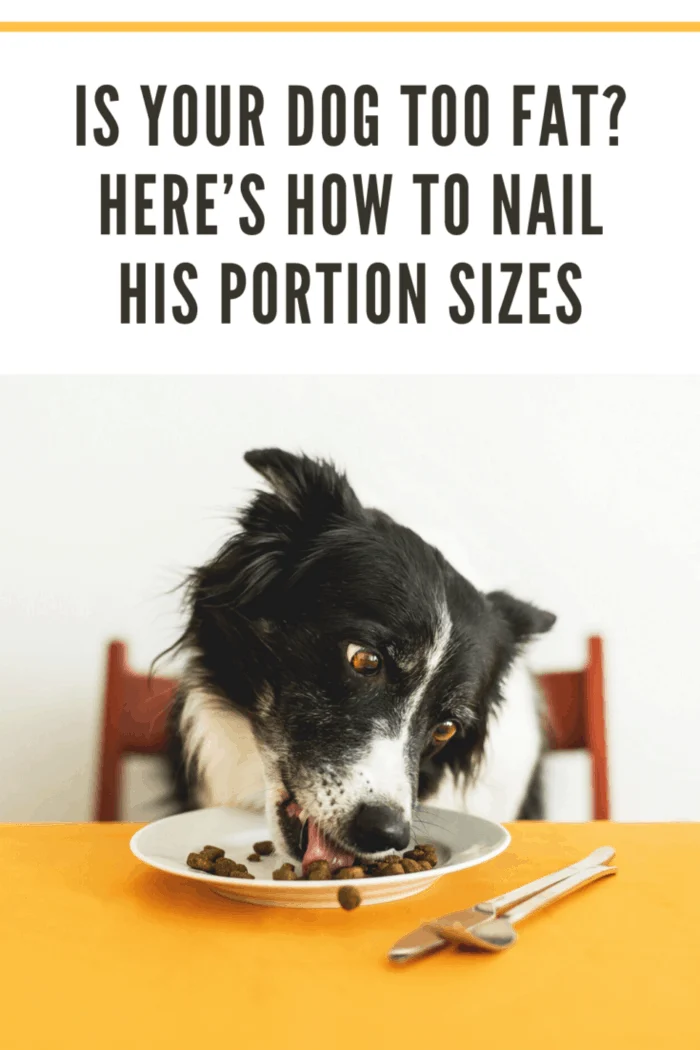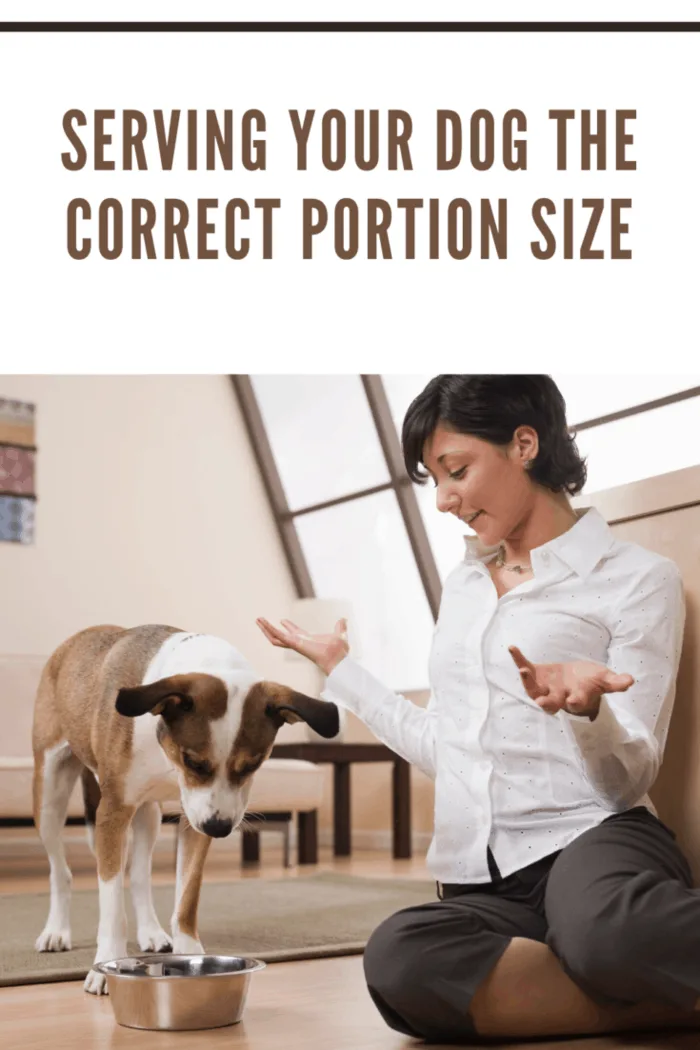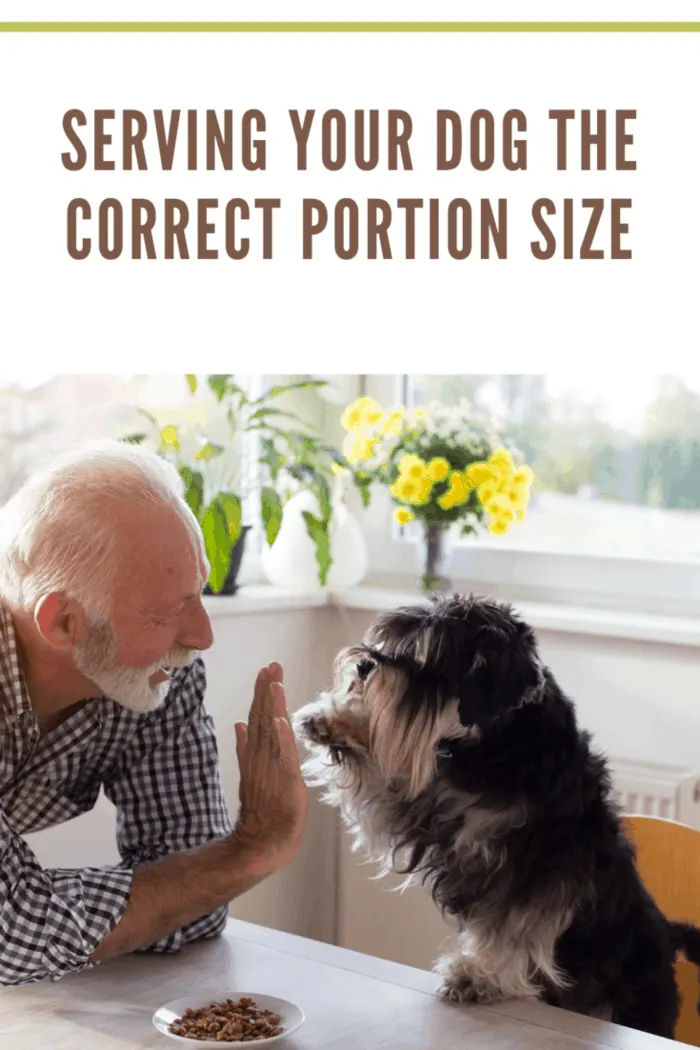Is your dog getting to be a real chunker? Chubbiness might be cute in dogs, but do you know what’s not cute? Heart disease, arthritis, joint problems, Cushing’s disease, skin problems, and even cancer – are all disorders that can result from canine obesity. But figuring out how much to feed your dog isn’t as simple as it may first appear. Pet food labels seem to offer guidance, but these charts can be misleading and confusing. The amounts suggested can be too much for many dogs – and too little for some dogs. How much to feed your dog depends heavily on your dog’s age, size, activity level, and other factors, like his metabolic rate. To nail your dog’s portion sizes, you need to understand his caloric needs, measure his portions, establish regular mealtimes, and perhaps use feeding tools that can help him eat more slowly.

Is Your Dog Too Fat? Here’s How to Nail His Portion Sizes
Talk to Your Vet
Dogs come in all different sizes, so their caloric needs can vary from just 139 calories a day for a tiny, three-pound dog to more than 1900 calories a day for a massive, 100-pound dog. (Pet MD)
You can use the canine body condition scoring system to determine if your dog is fat, just right, or underweight. (AAHA)
If your dog falls in either the “too fat” or “underweight” categories, the best thing to do is to talk to your vet to determine how much to feed him.
If your dog is already a little (or a lot) fat, your vet can advise you on how much to feed him to get him down to a healthy weight.
This may be less than the amount you will eventually need to feed to maintain your healthy weight, or it may be a different kind of food.
If your dog is underweight, your vet will help you add small amounts to his daily portion, titrating until he has reached a healthy weight.
If your vet recommends a weight-loss dog food, you should use it.
Otherwise, give your dog food formulated to his life stage, whether a puppy, adult, or senior.

Measure His Portions
When feeding your dog, it’s important to measure his portions using a real measuring implement – don’t just grab a mug out of the cupboard.
You can either use a regular kitchen measuring cup or a measuring tool designed for dog food.
You shouldn’t rely entirely on the recommended portion sizes on your pet food bag because these portions can be misleading.
They’re usually too vague – they may, for example, recommend feeding ½ to 1 ½ cups of food for dogs 10 to 30 pounds.
Well, that’s a big weight range and a big measurement range, too.
If you fed a 10-pound dog a cup and a half of food every day, he’d be fat in no time, but if you fed a 30-pound dog half a cup of food a day, you’d be counting his ribs.
And what if your dog is 18 pounds – how much should you feed him, then?
That’s why it’s so important to talk to your vet about portion sizes – but you also need to consider your dog’s individual activity level and metabolism.

Check Your Dog’s Body Condition Score Regularly
How can you determine your dog’s individual calorie needs?
You check his body condition score every two to four weeks.
It’s easy – you look at your dog and match his body shape up to the chart.
If your dog is losing weight, feed him a little bit more – if he’s gaining weight, feed him a little less.

Set Regular Mealtimes
Don’t free feed! Dogs need regular meal times.
Puppies might need three or more mealtimes daily, while they’re still growing, but adults can get by on two.
Divide their daily portion up into two or more feedings.
Use the Right Feeding Tools
If you find that measuring your dog’s portions is too complicated, for whatever reason, you can buy dog food bowls designed to hold a reasonable portion size of food for your dog based on his weight.
If establishing meal times conflict with your scheduling needs, you can buy automatic feeders that release a certain amount of food, wet or dry, on a schedule you program yourself.
If your dog gorges himself, you can buy feeders that release the portion a little at a time over a period of about 15 minutes, forcing your dog to slow down.
The right feeding tools could make all the difference in keeping your dog at a healthy weight.
Nailing your dog’s portion sizes can be more complicated than it might appear on the surface, but it’s your responsibility as a pet parent to make sure your dog gets the right amount of food.
Your dog can’t take the initiative to control his own weight – you have to do it for him.
And the sooner you take that step, the sooner you can improve your dog’s health – and the more years you’ll enjoy together.
